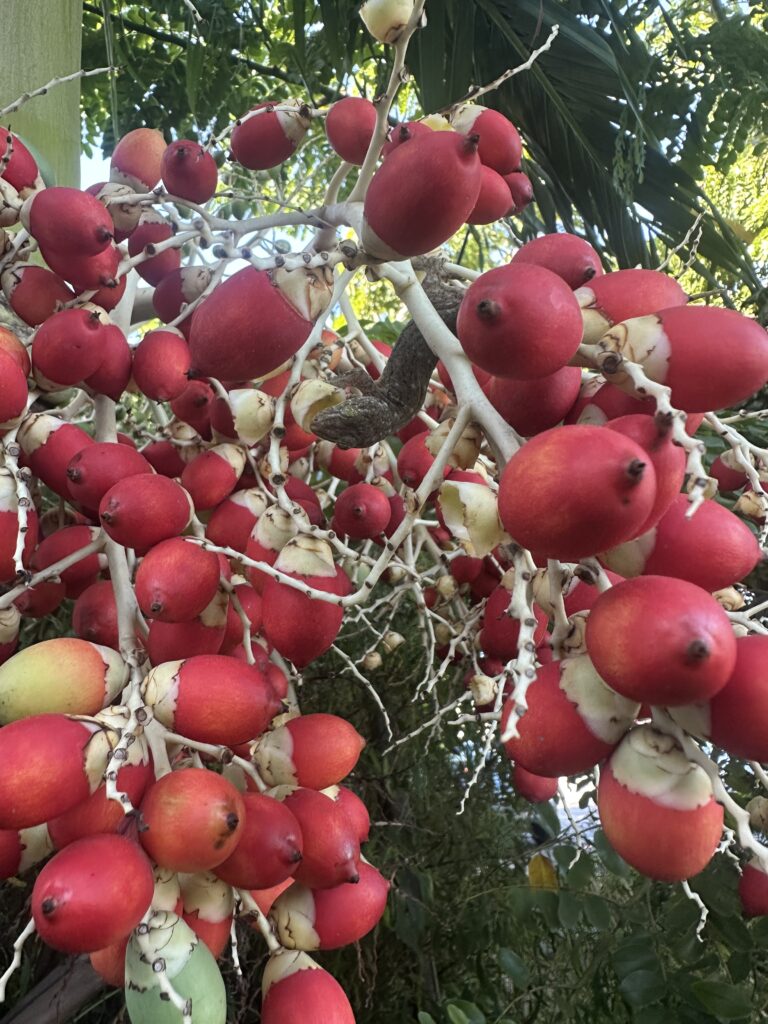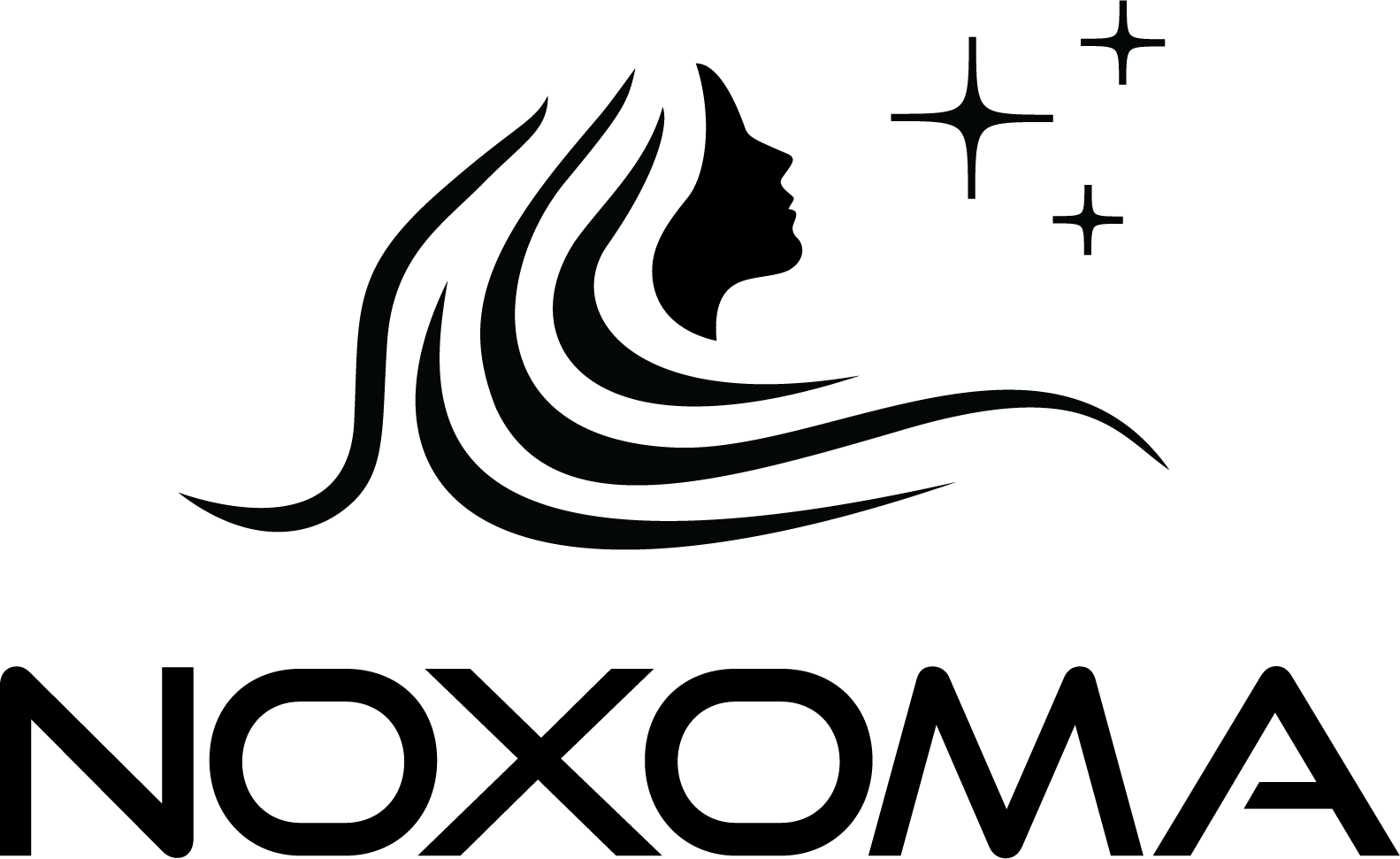Many who grew up in the 70’s or 80’s have this notion of Bora Bora to be the ultimate paradise vacation destination. We both remember palm clad posters with a lovely lagoon, a mountain peak and the name Bora Bora on them, which many decorated their walls with back then.
We were well aware that this destination mostly caters to tourists staying at the many luxury resorts which are spread around the lagoon. Therefore, this island is not considered the best sailing grounds. It is very limited where we are allowed to anchor, and we are only allowed to drop anchor for max 36 hours at two locations in the lagoon. However, there are many well maintained moorings we can use, for EUR 40 per night.
It is a short sail from Taha’a, our last stop, and we arrived in Bora Bora in the afternoon. We went straight to the anchoring spot on the East side, which is the most iconic side of the island. This is where the picturesque crystal clear turquoise part of the lagoon is located, and where also most of the luxury resorts are sitting on the the outer reef motus (islets).
As we were approaching the anchorage and the admiral prepared the anchor, we discovered that our windlass was not working. We have experienced a few hiccups with it lately, but now it was totally dead. Luckily, we were in a location with moorings, so we had an option besides setting anchor. However, we are on our way to several remote locations where we are reliant on the anchor working. And, we just left the island with the last boatyard and chandlery where we can find any kind of parts for a while…
The captain’s “favorite” activity then took place. He crawled into our forward locker, and started taking the windlass and associated system apart. Tight spaces over long periods of time in a boiling sun, with grease and dirt everywhere, with a time constraint (it was getting late in the day), is definitely not a fun experience. The admiral managed the helm, just keeping us locally in the middle of the small bay, as the captain performed his repairs. After 1.5 hours inside the locker, he came crawling out, and we at least had some movement on the windlass.
We went into the shallows, with quite a few bommies (coral heads) around us, and the sun straight against us. Even in a pristine lagoon, it can be very hard to see which bommies are too shallow for us and not. We were able to drop the anchor successfully in a sandy spot, and were very relieved.
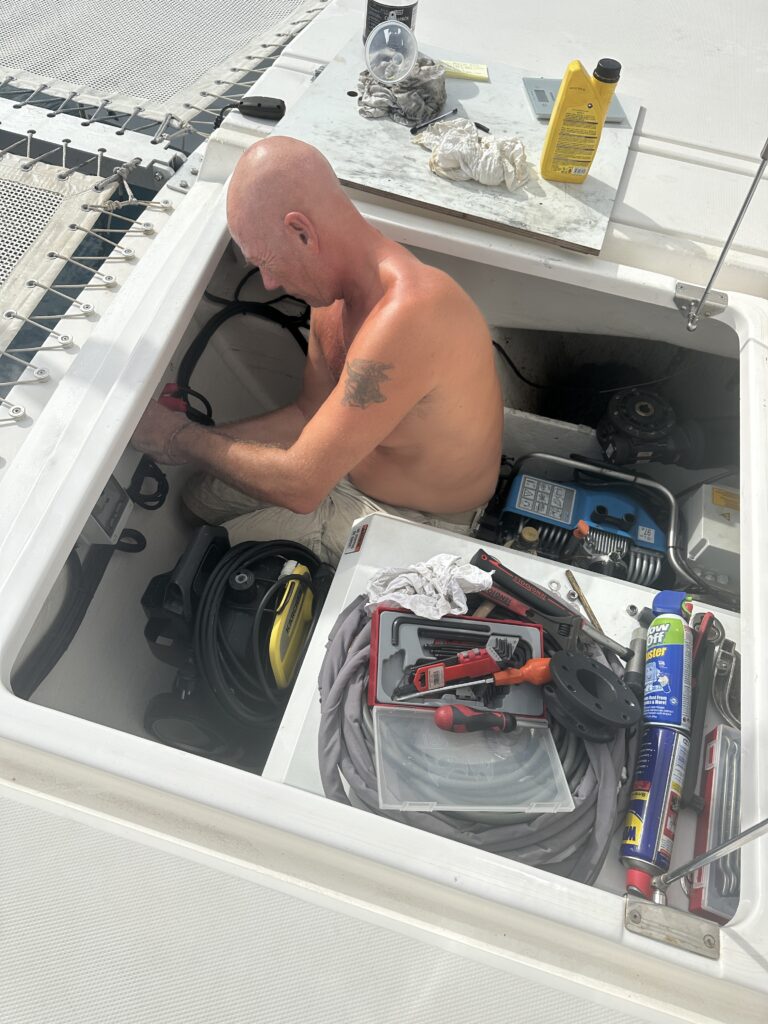
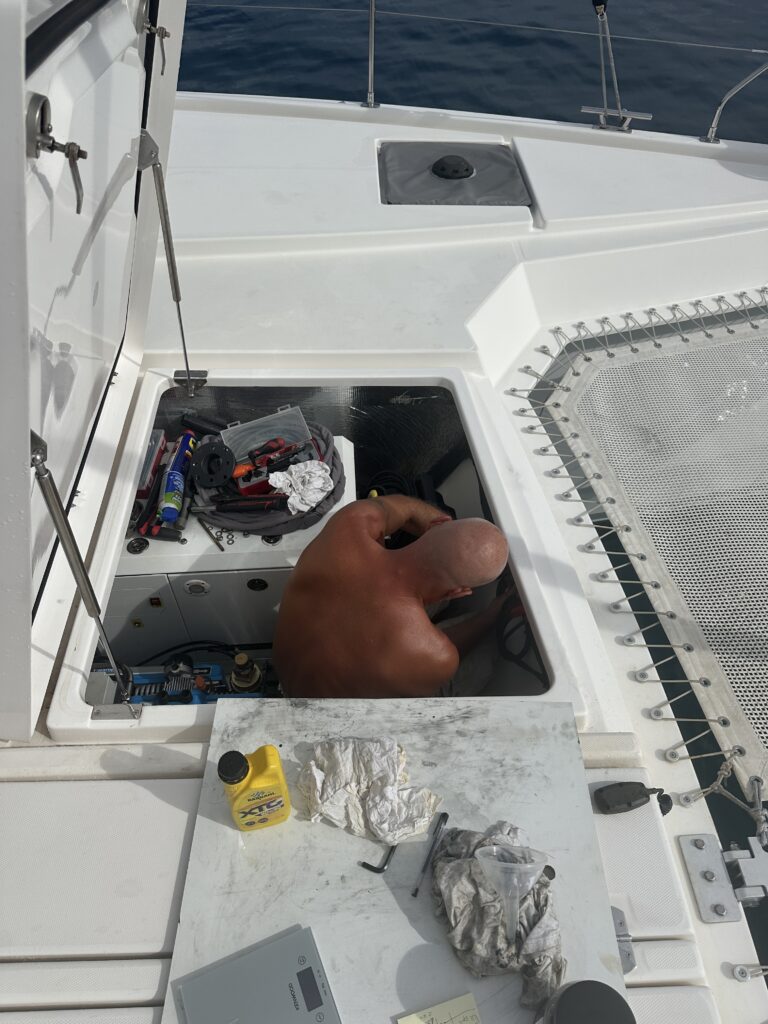
The next day, we took our dinghy and went sightseeing by sea. The iconic mountain peak of the main island changes its shape as we rode southwards. The peak is actually not one peak, but two different peaks that look like a triangle shaped peak from a certain angle.
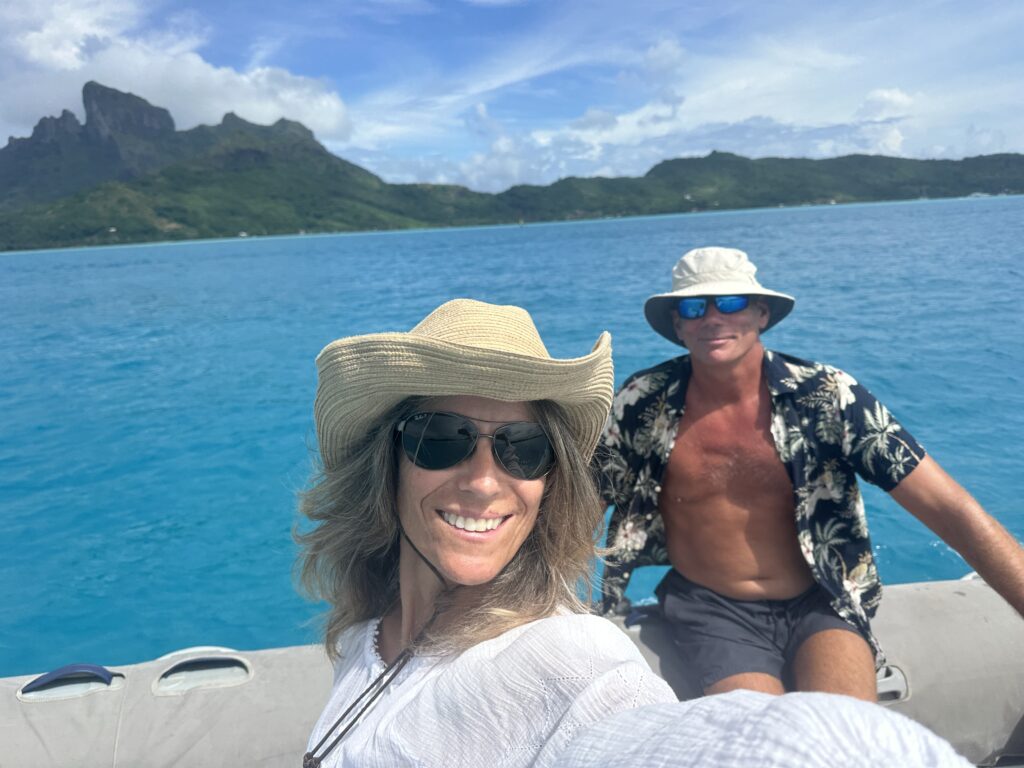
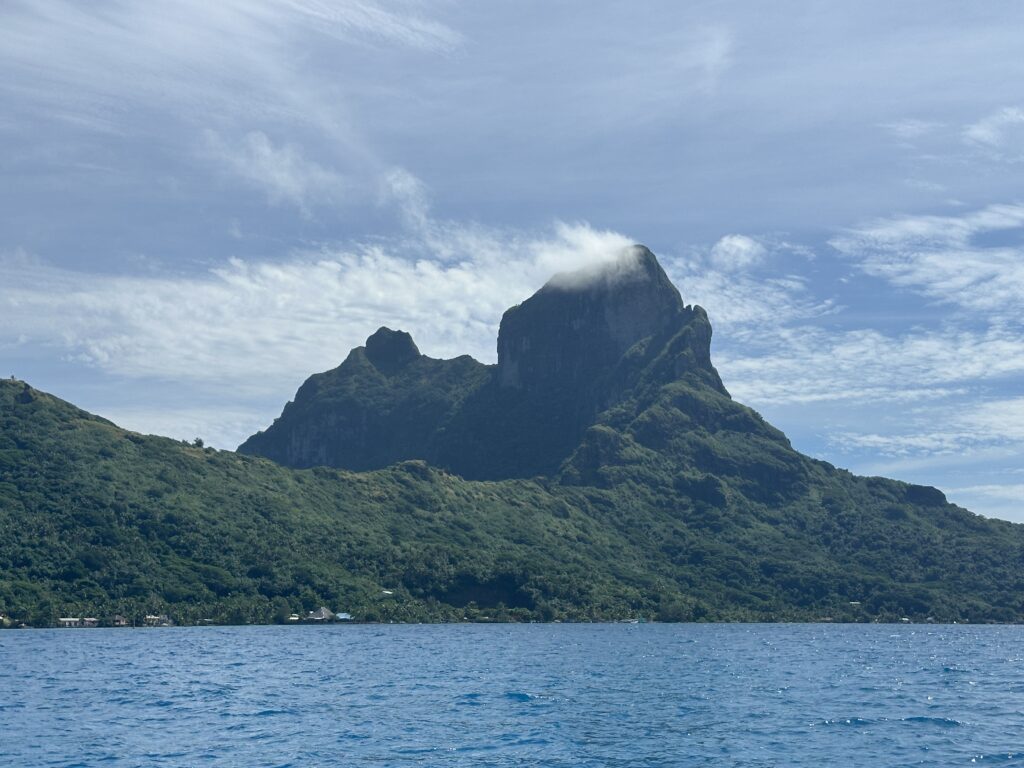
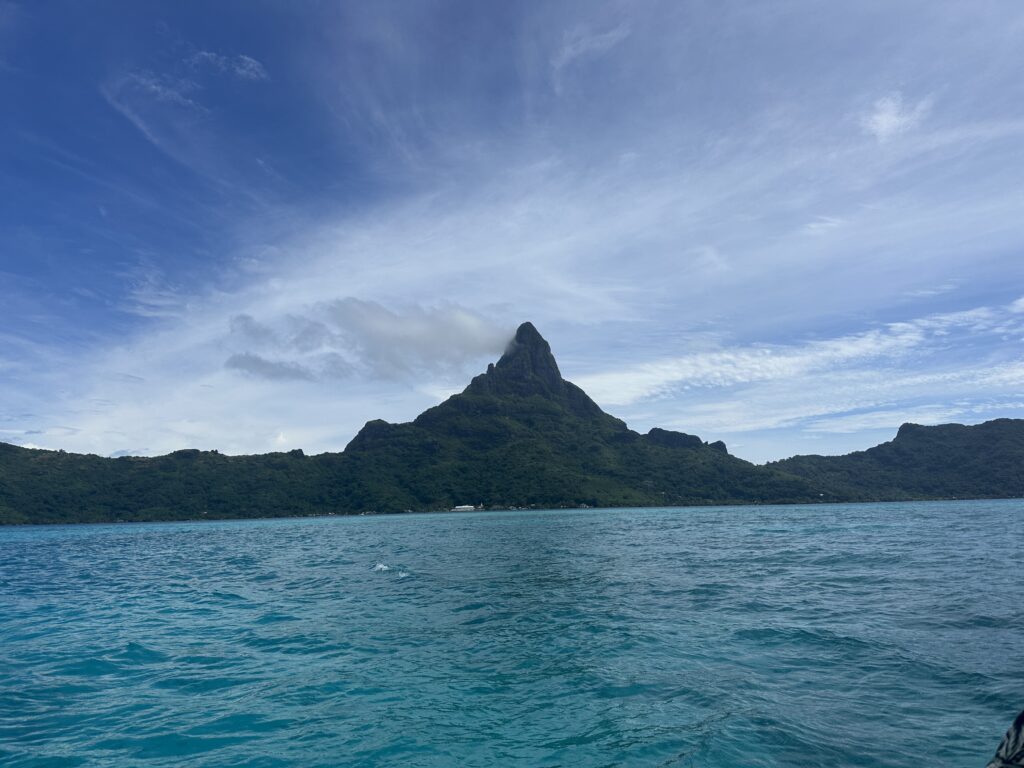
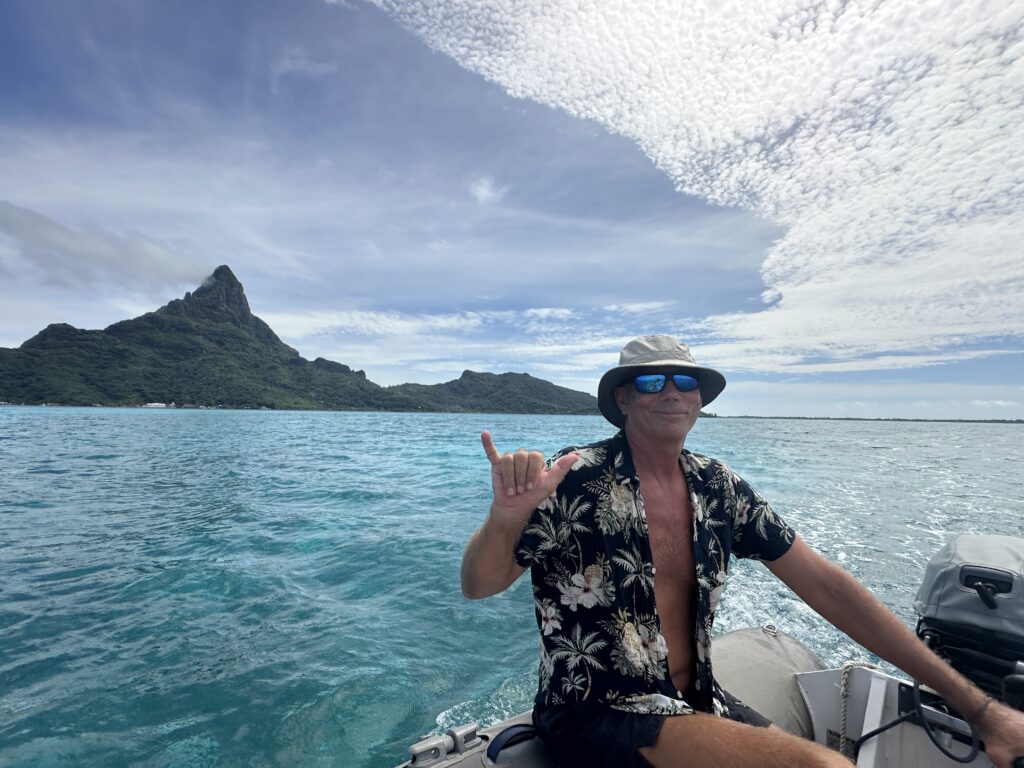
We also went by the luxury resorts, and staying at a villa located on poles over the water has definitely been on our bucket list for a while. However, we both agreed that our villa on the water beats these in a heartbeat!


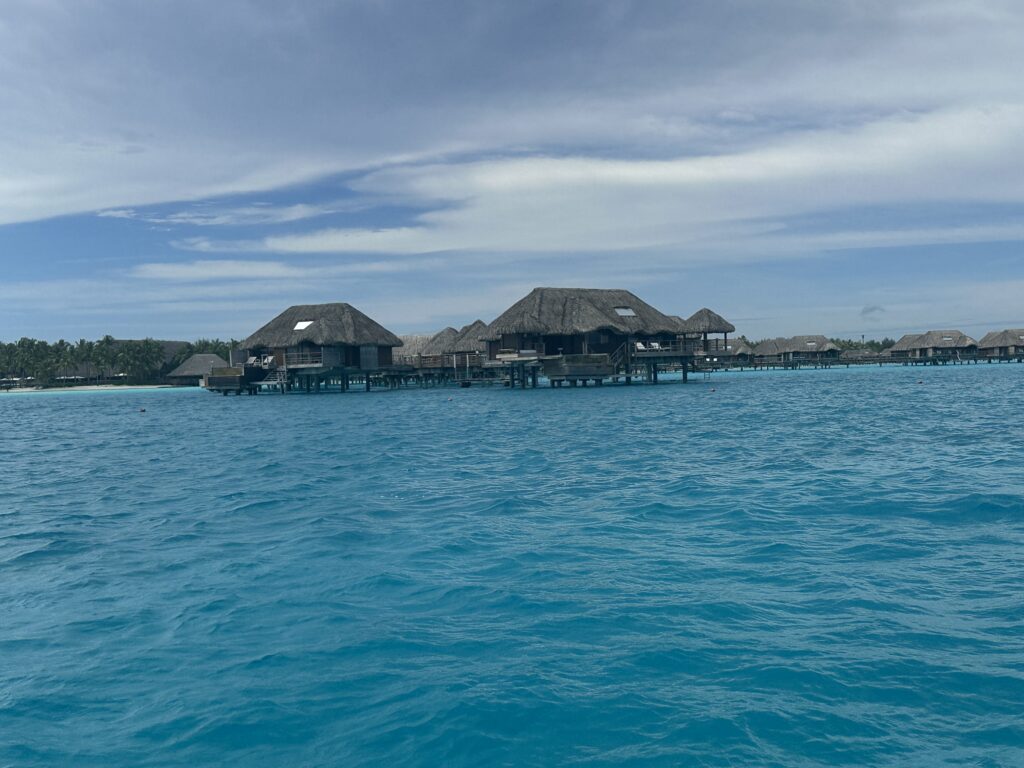
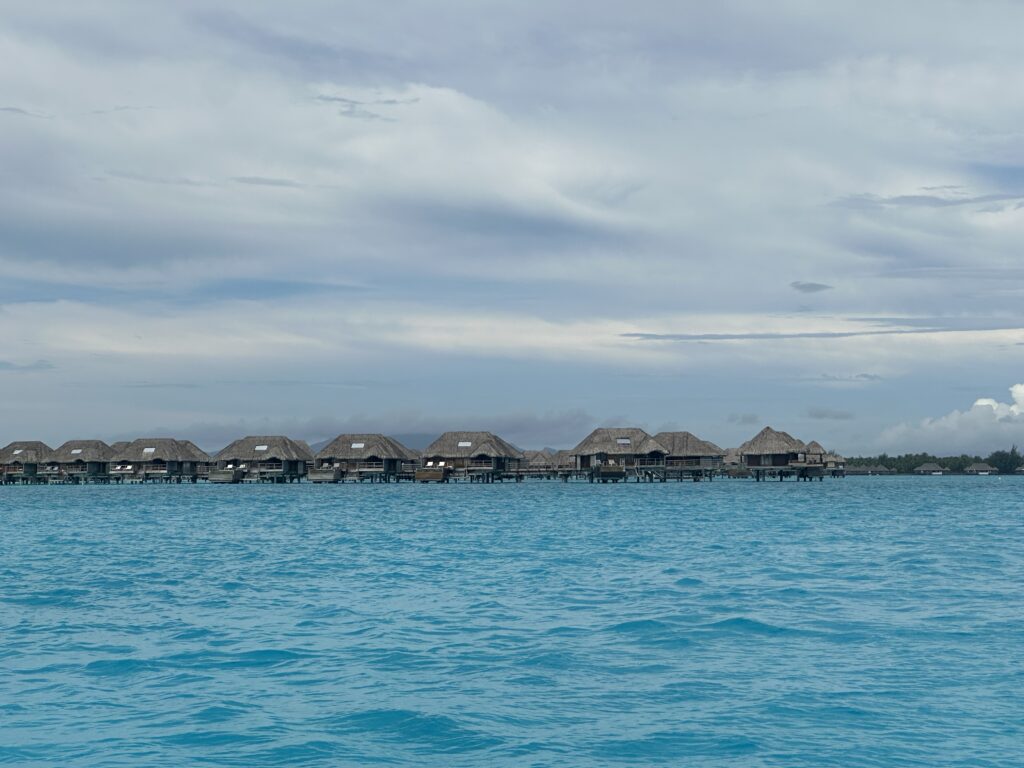
We did want to visit one of the resorts, though, and “play vacation” for an afternoon. We had learned from the trustworthy No Foreign Land (the cruiser’s preferred travel app), that the Intercontinental Moana Bora Bora resort is open for outsiders to visit for lunch. We had booked a table the day before, and went there as part of our dinghy excursion. We splurged on a bottle of wine, awesome burgers and EUR 4 ice cream scoops.
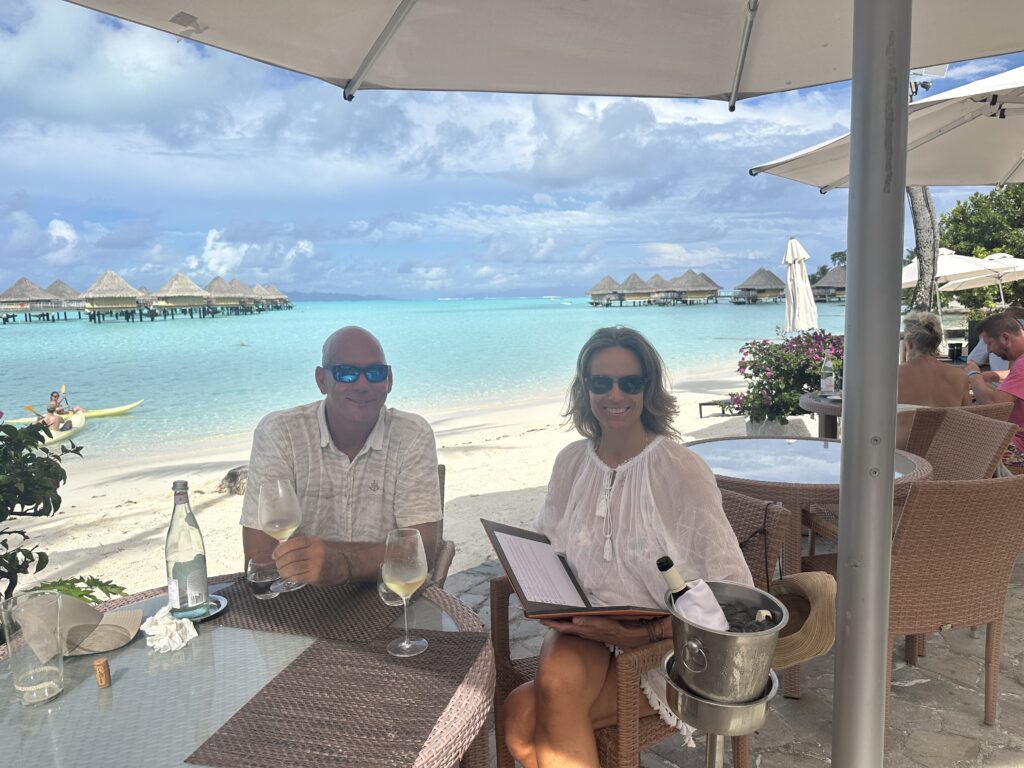
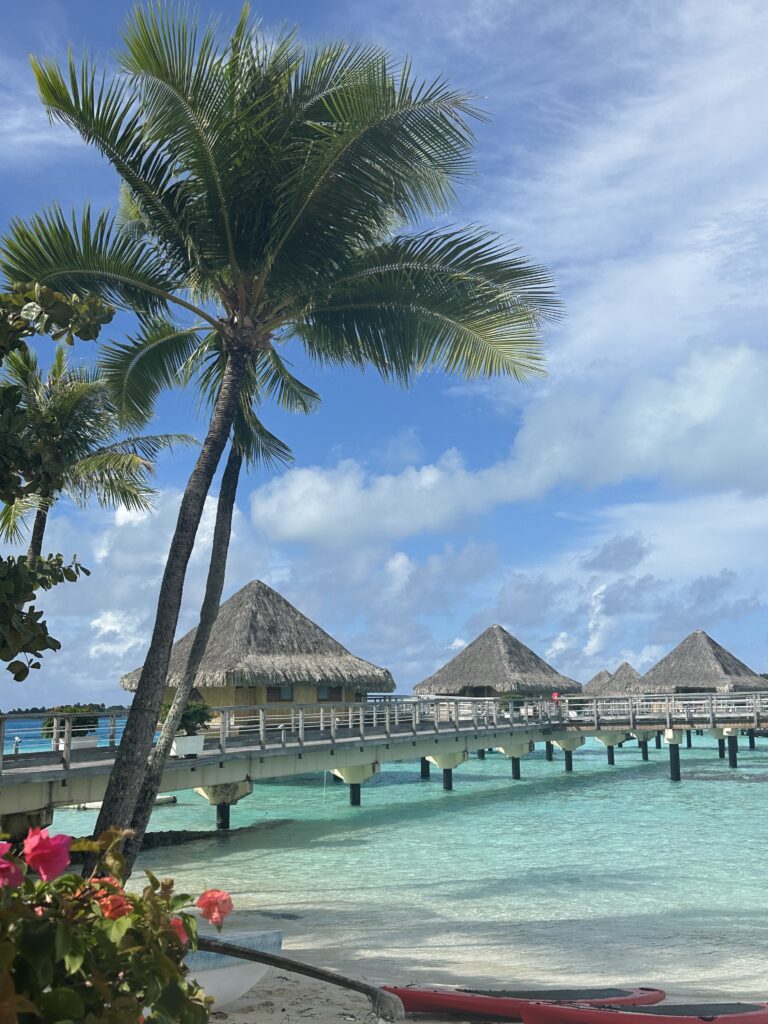
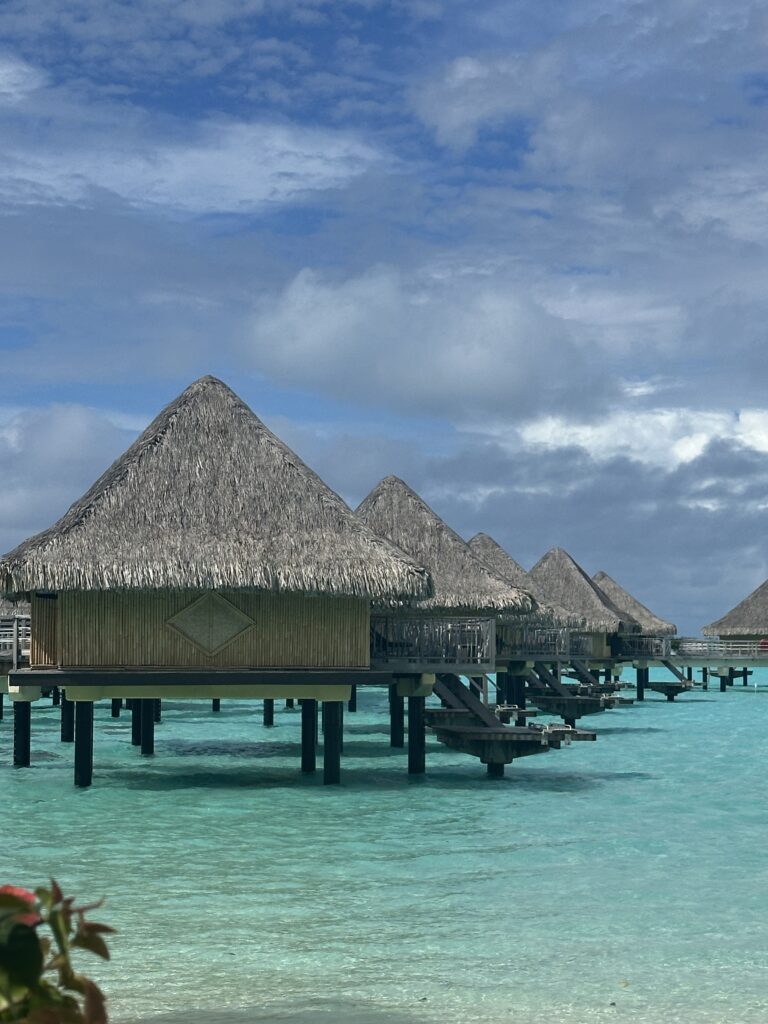
After our designated 36 hours at the anchorage on the east side of the island, we went to the west side, which is close to the main town, Vaitape. We got one of the last moorings available, as we were there at the same time as half of the boats from the World Arc round the world sailing rally, which had booked all of the moorings in front of the Yacht Club.
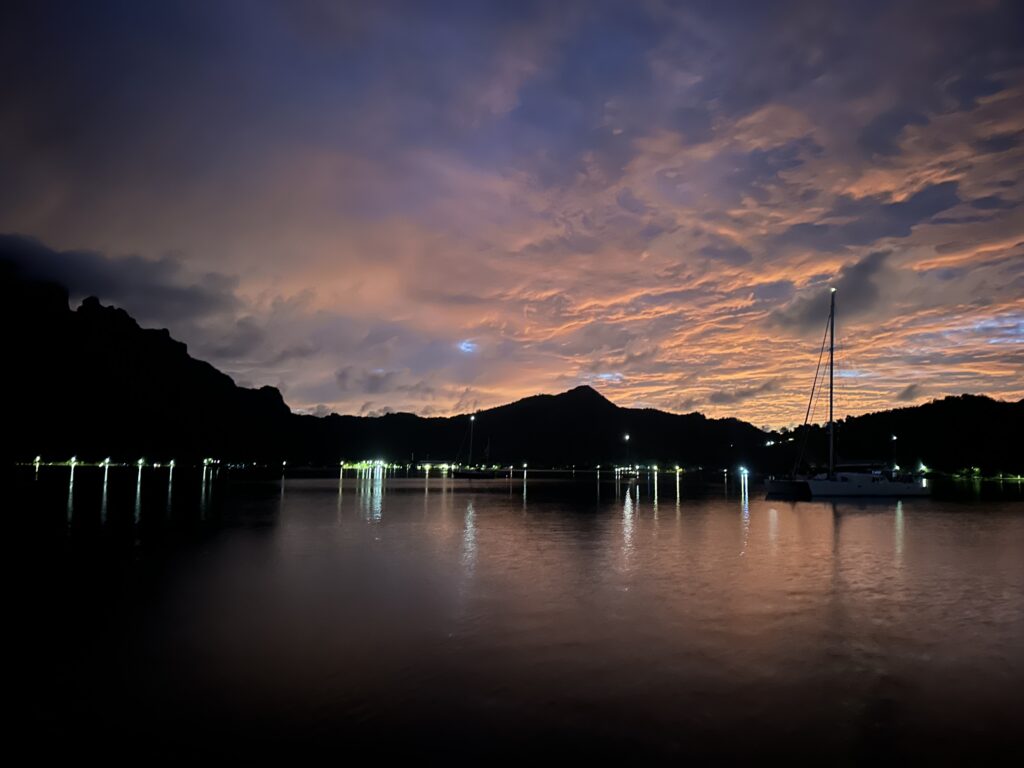
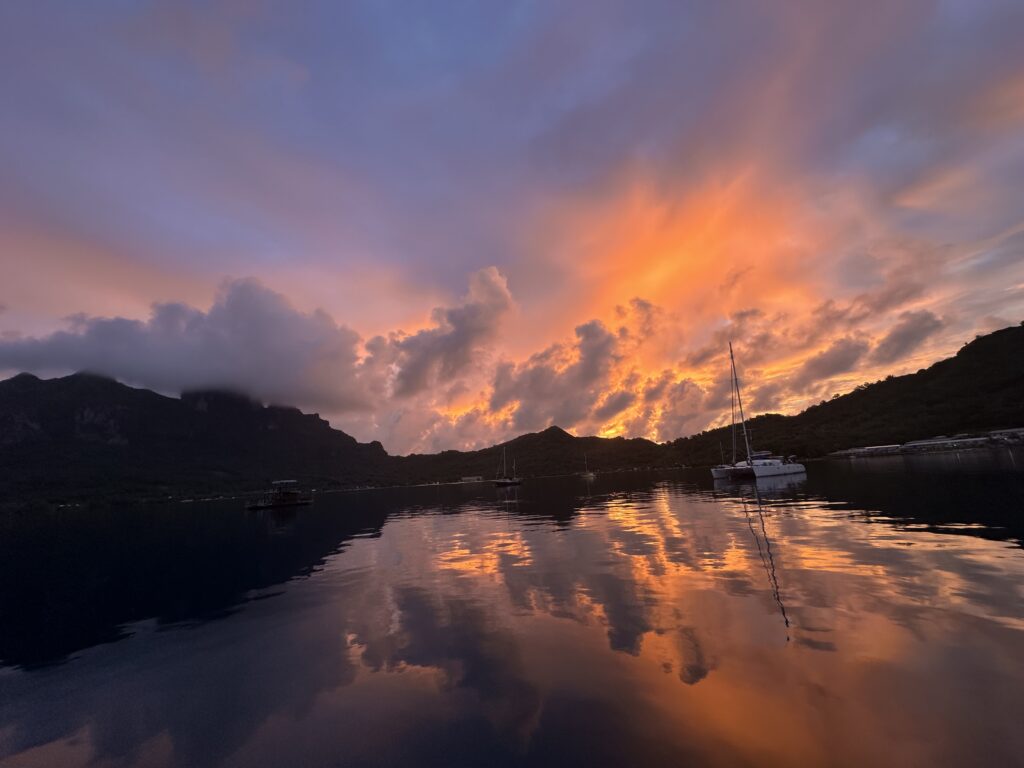
The next day, we cycled around the main island, which was an easy, mostly flat 31 kms bike ride.
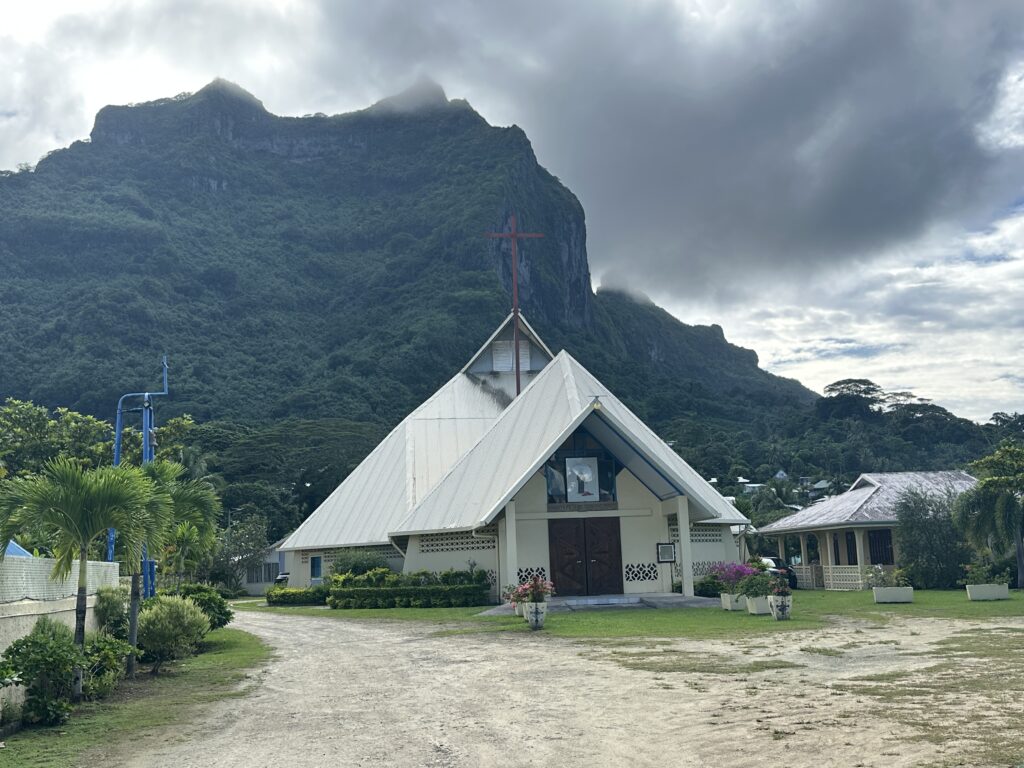
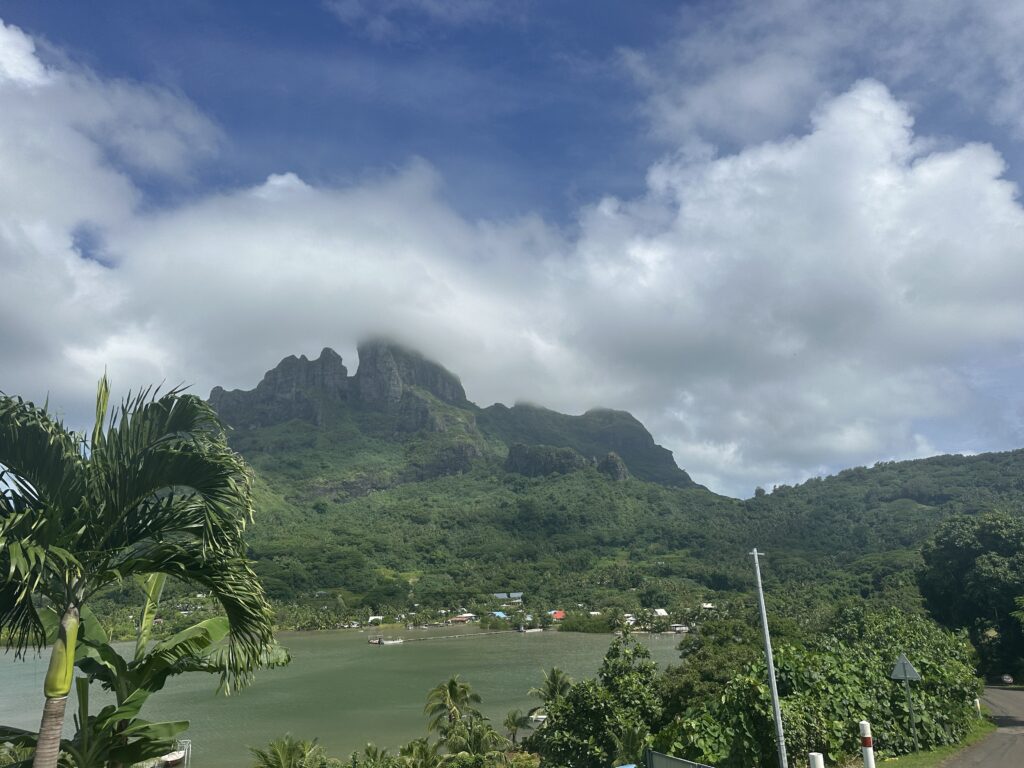
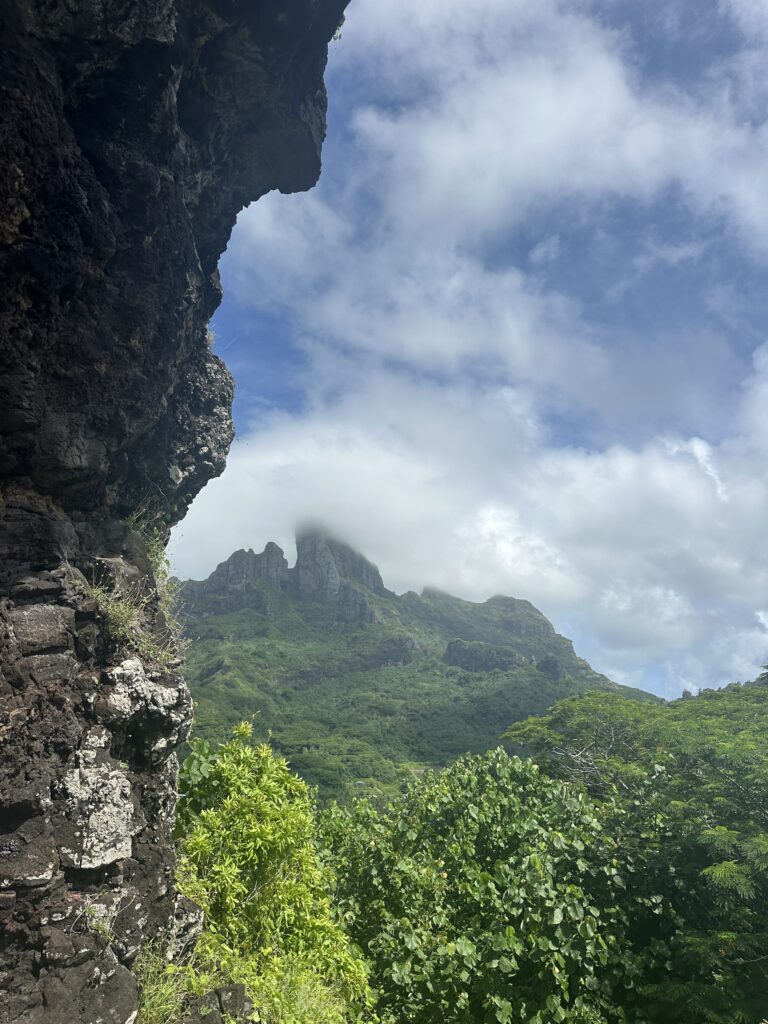
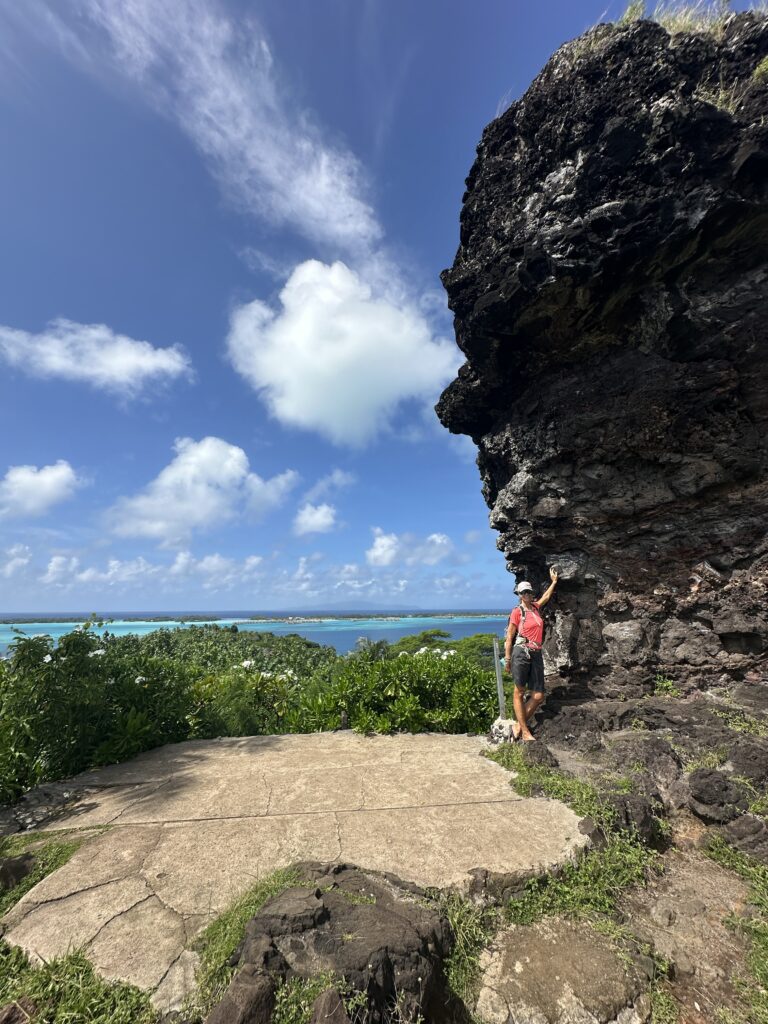
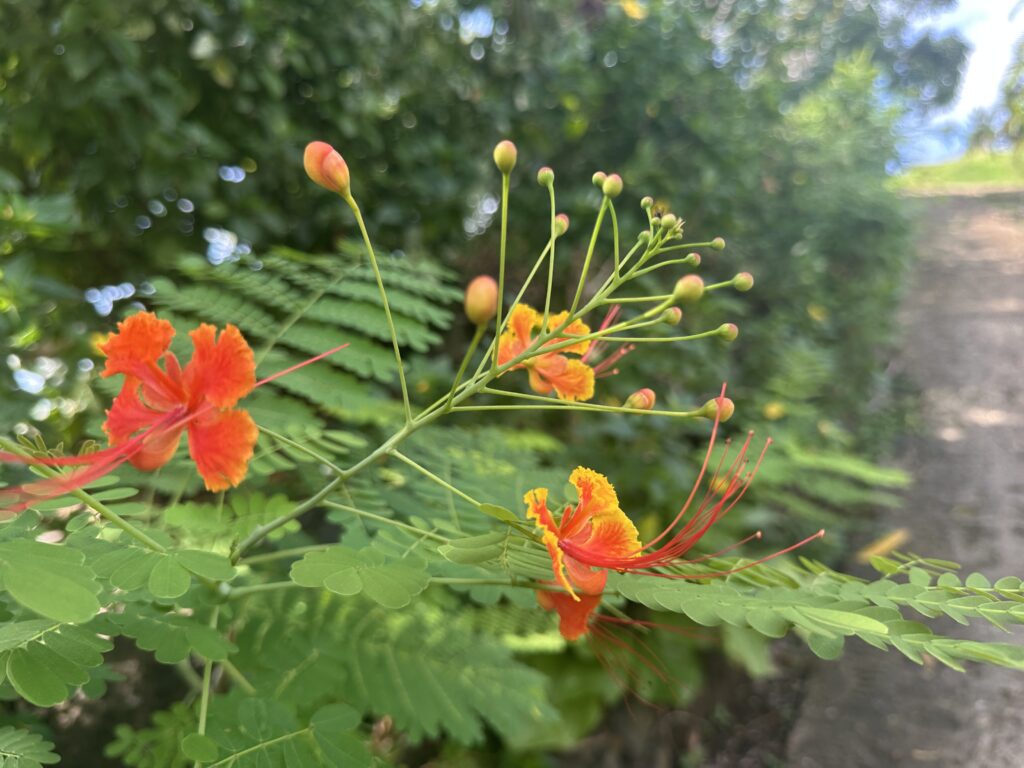
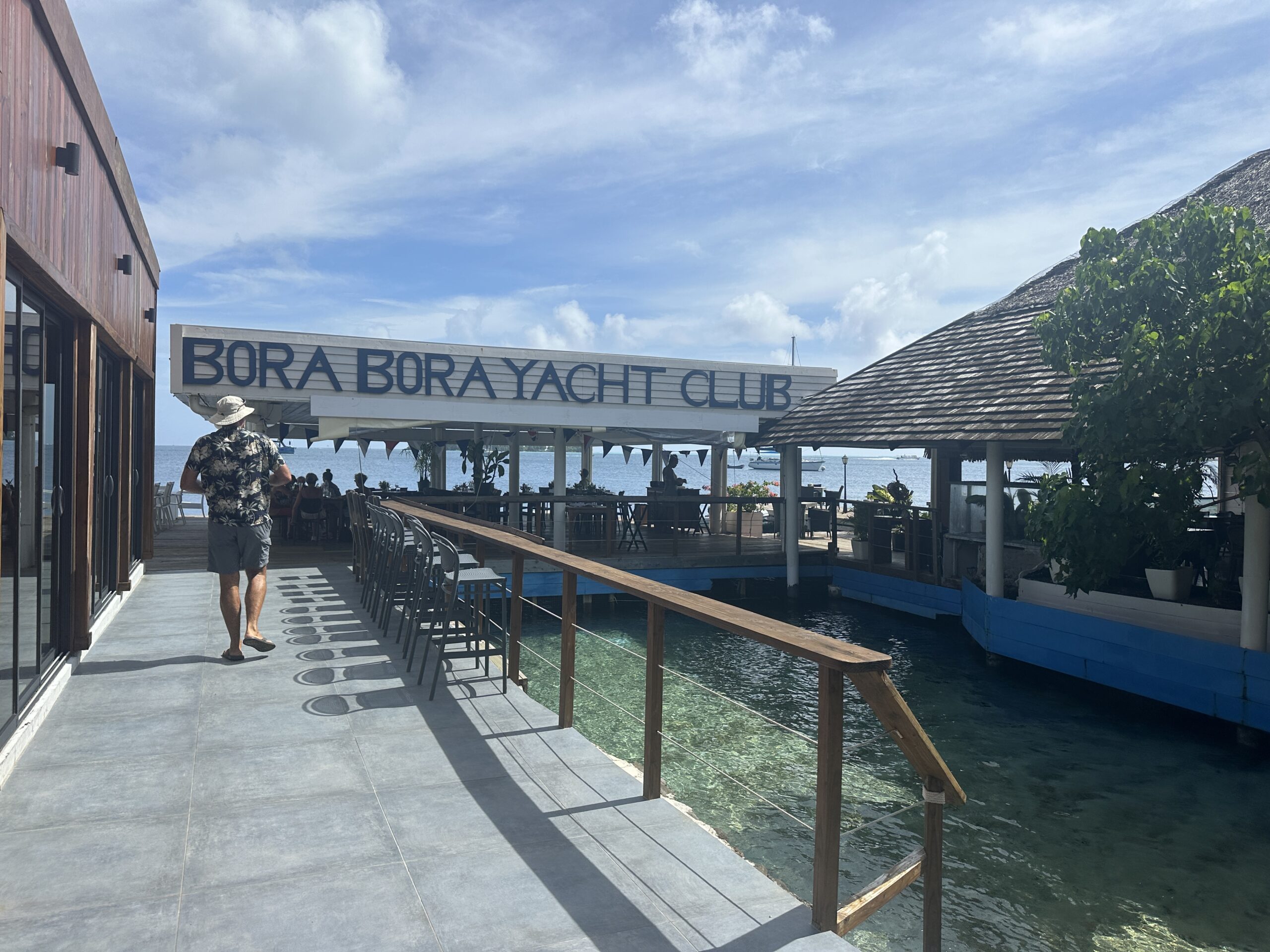

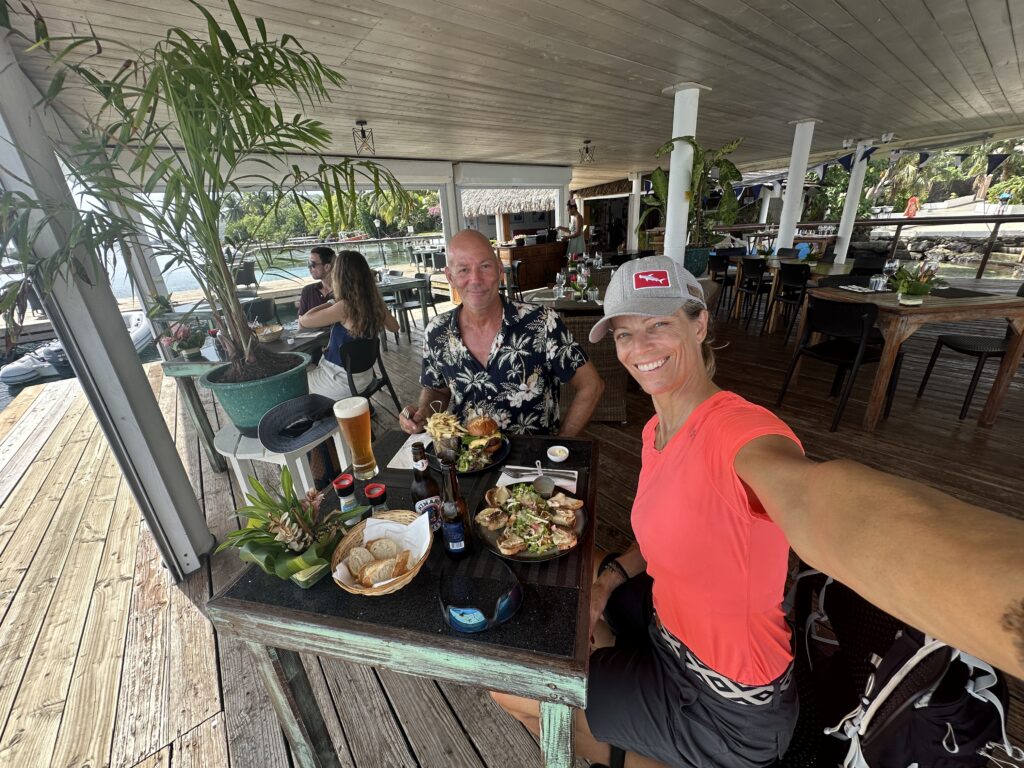
We discovered that several of the resorts on the main island were shut down. Perhaps some during Covid, or perhaps also due to the fact that the competition from the newer resorts, which sit on the islets on the outer reef, have become more popular.
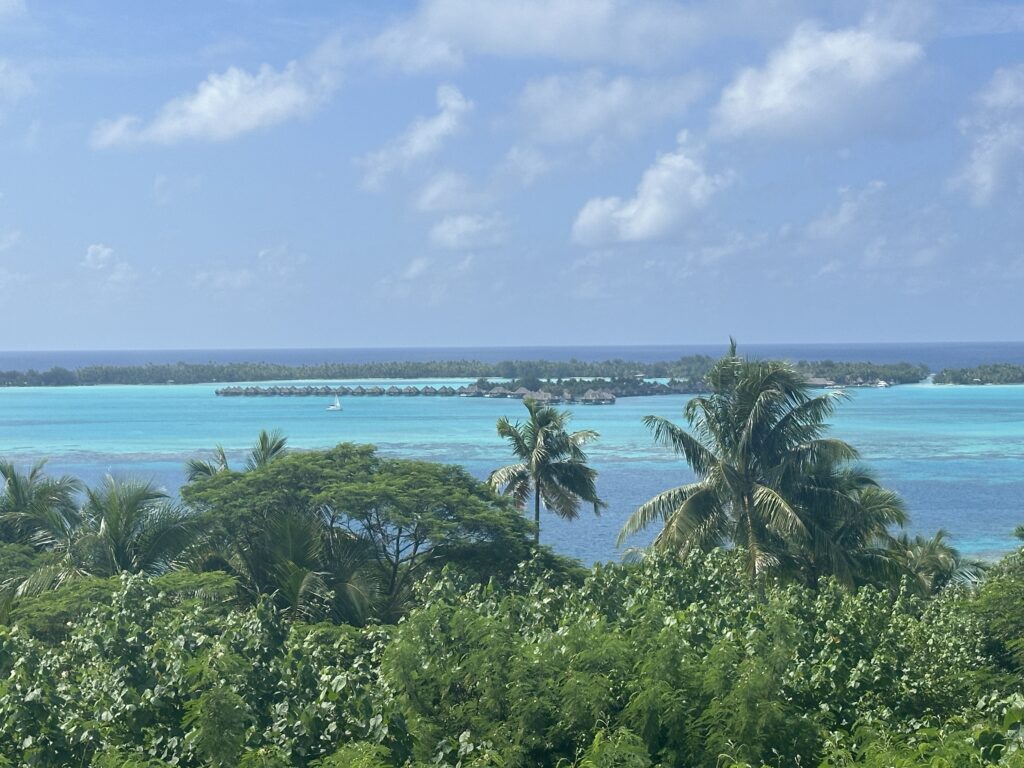
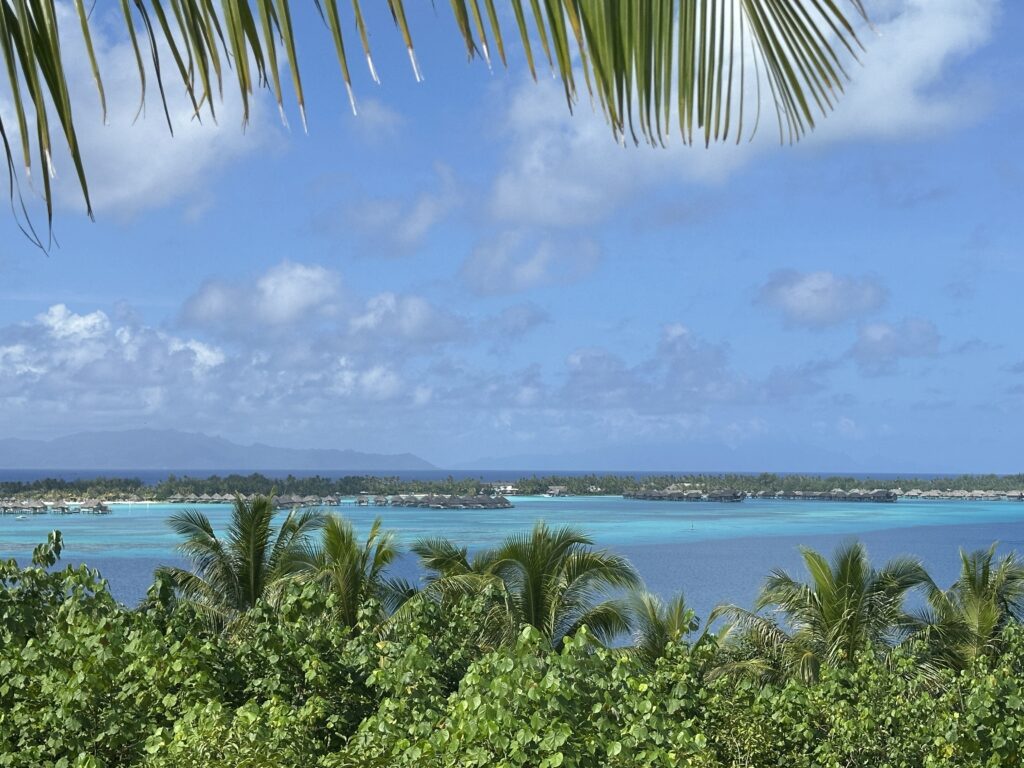
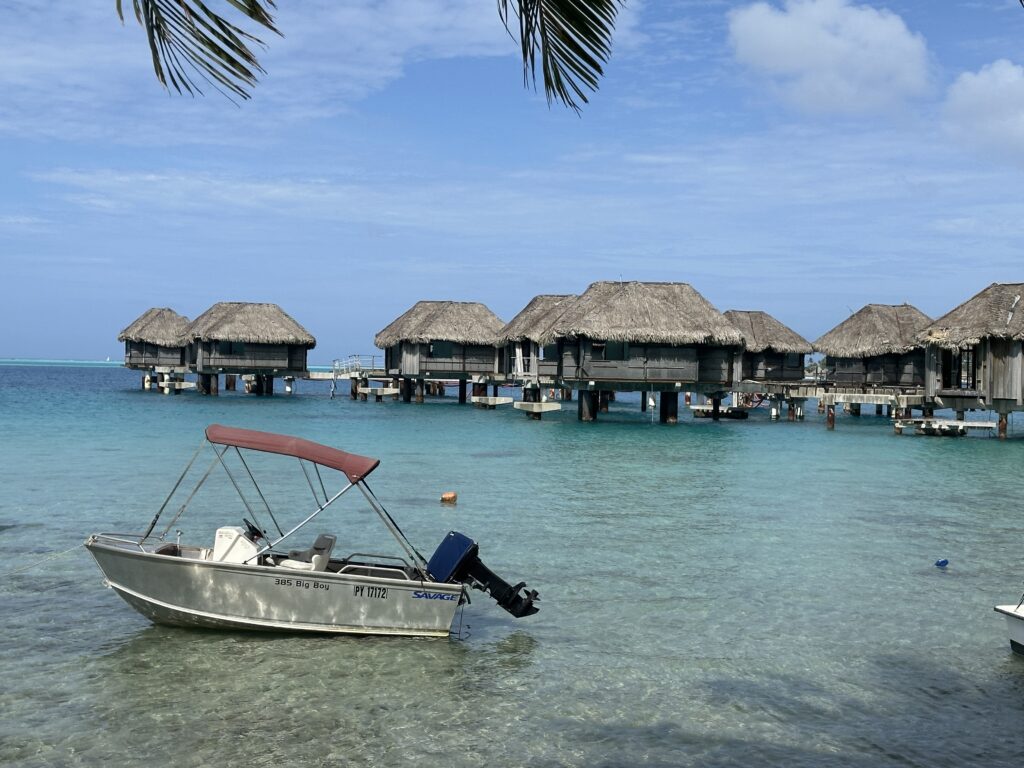
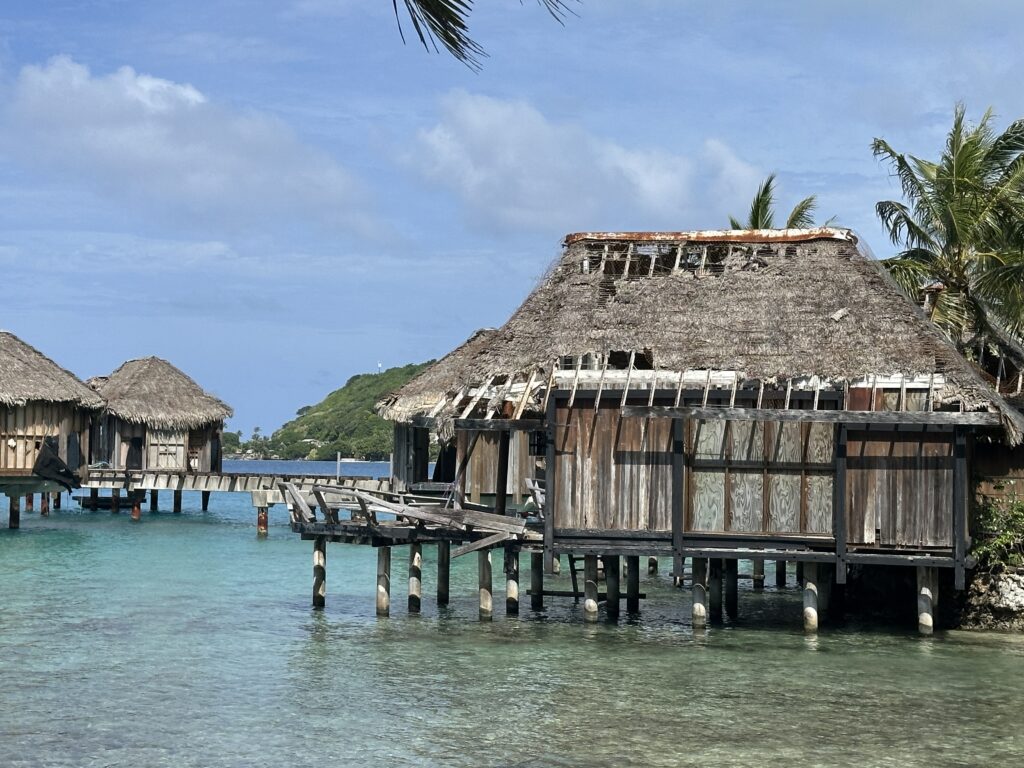
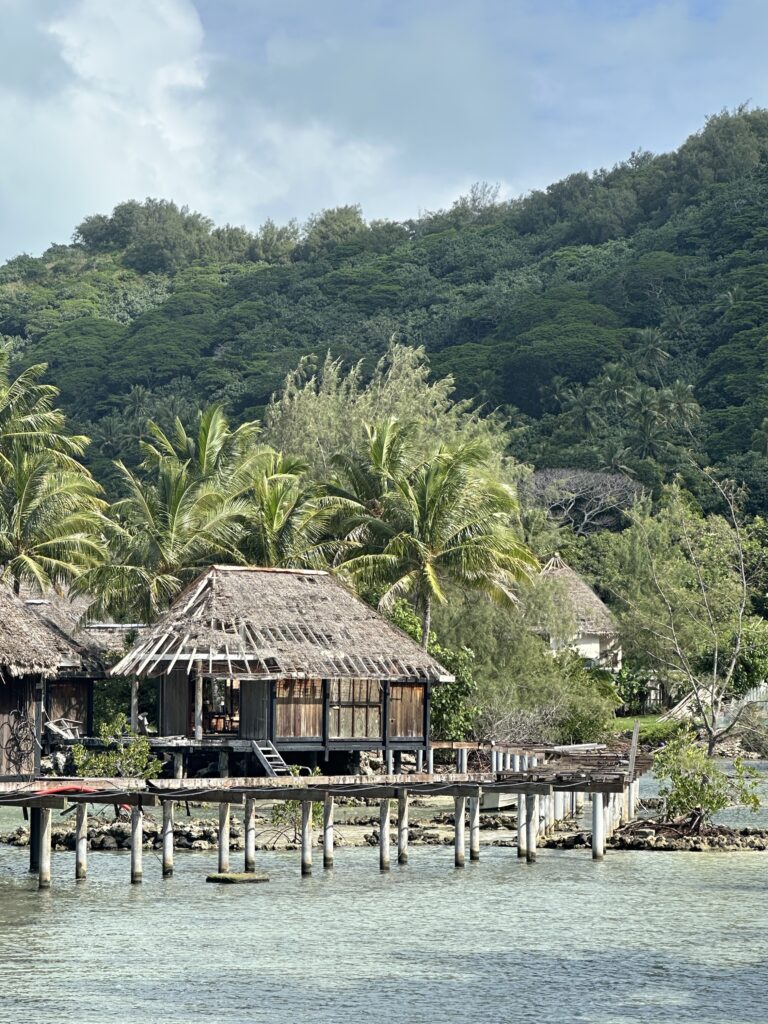
During WWII, Bora Bora was a refueling and supply base for the US Navy, to ensure access between the US West coast and South Pacific. Canons and other military fortifications can be seen on several locations around the island.
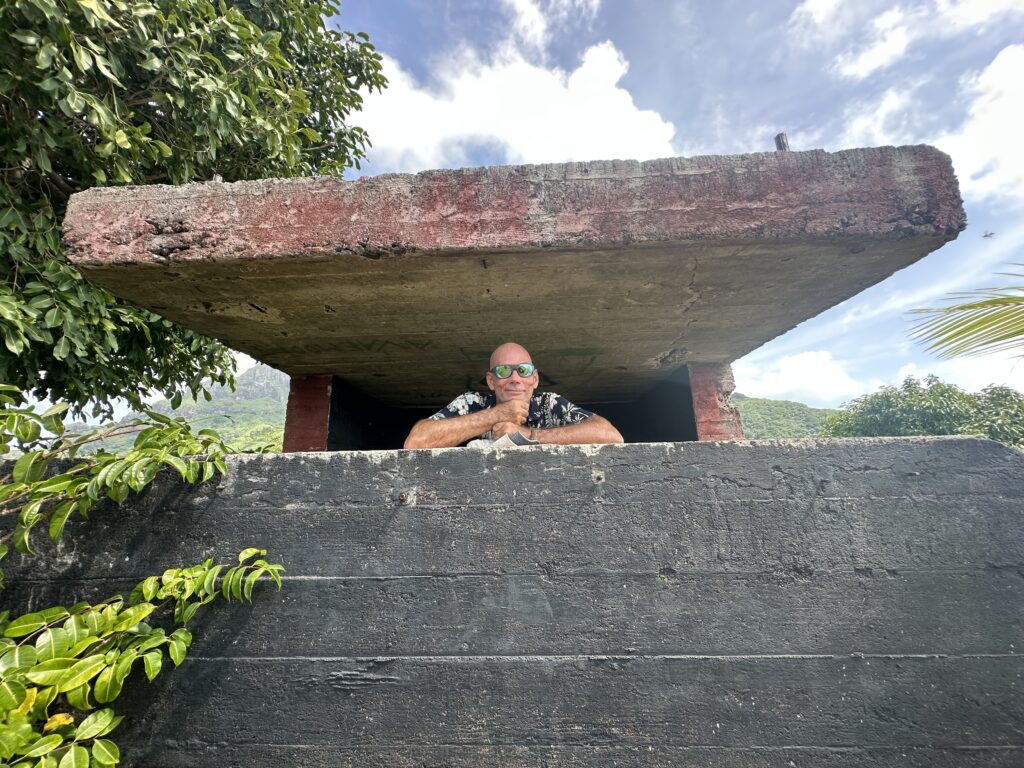
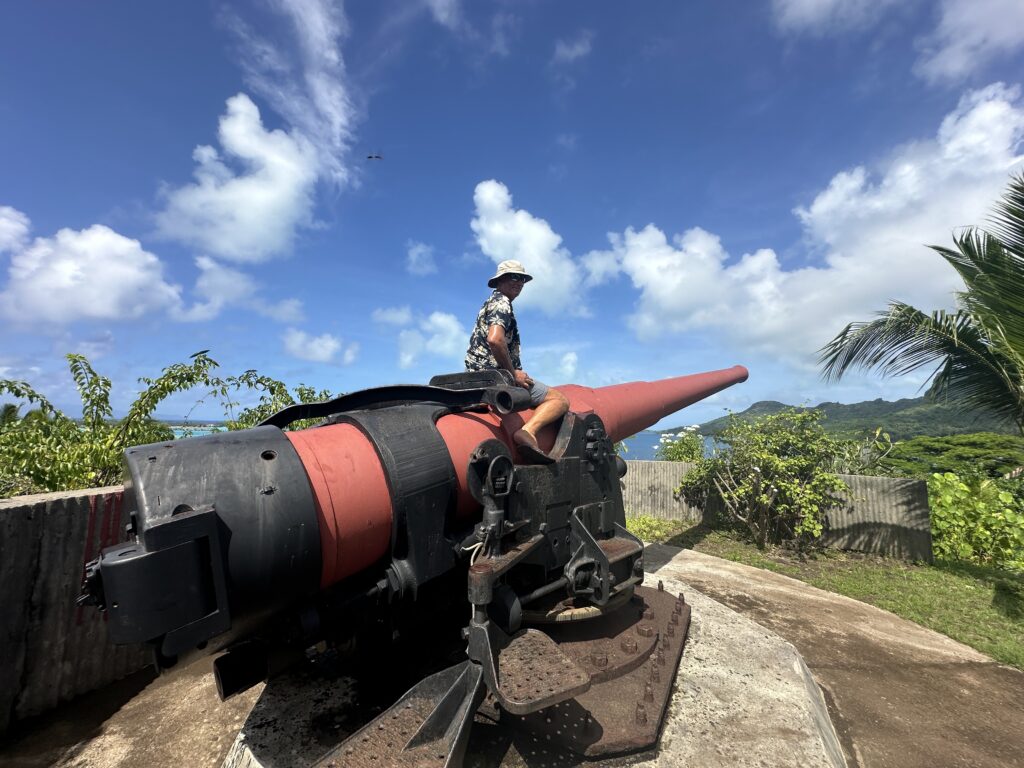
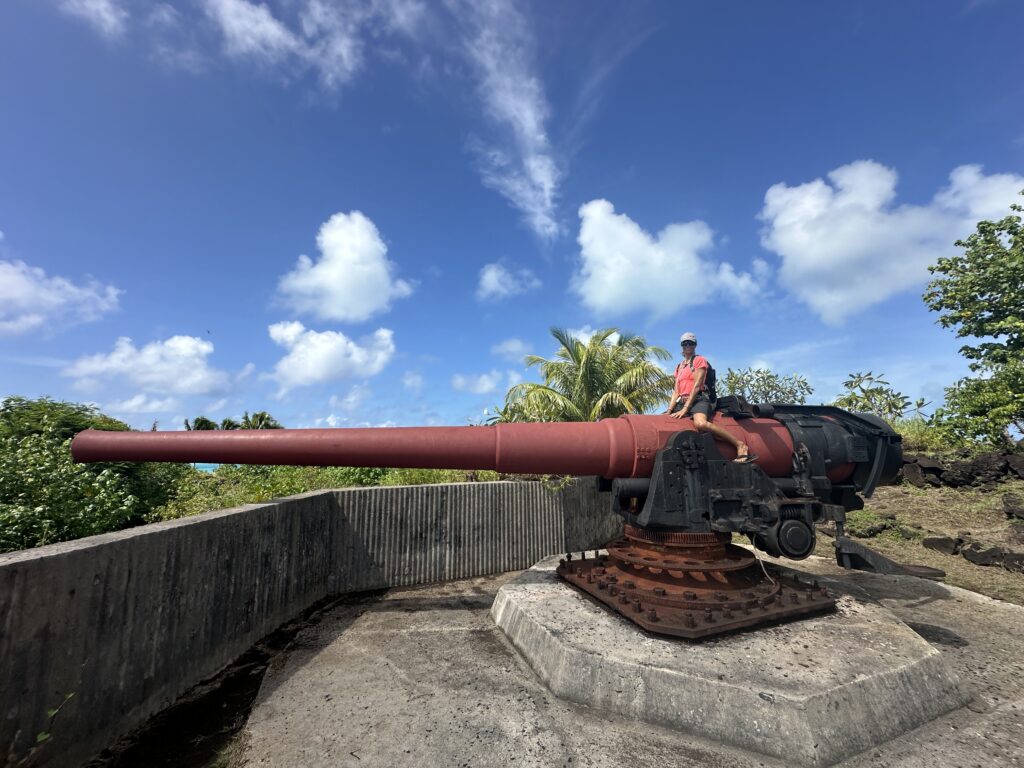
As the island is catering to resort tourism, there is not a lot of activities going on in the main island, except hiking to the peak (which we did not take the time to do) as most inhabitants work for the hotels. However, we did discover a few local artists, and also a few locally made clothing brands.
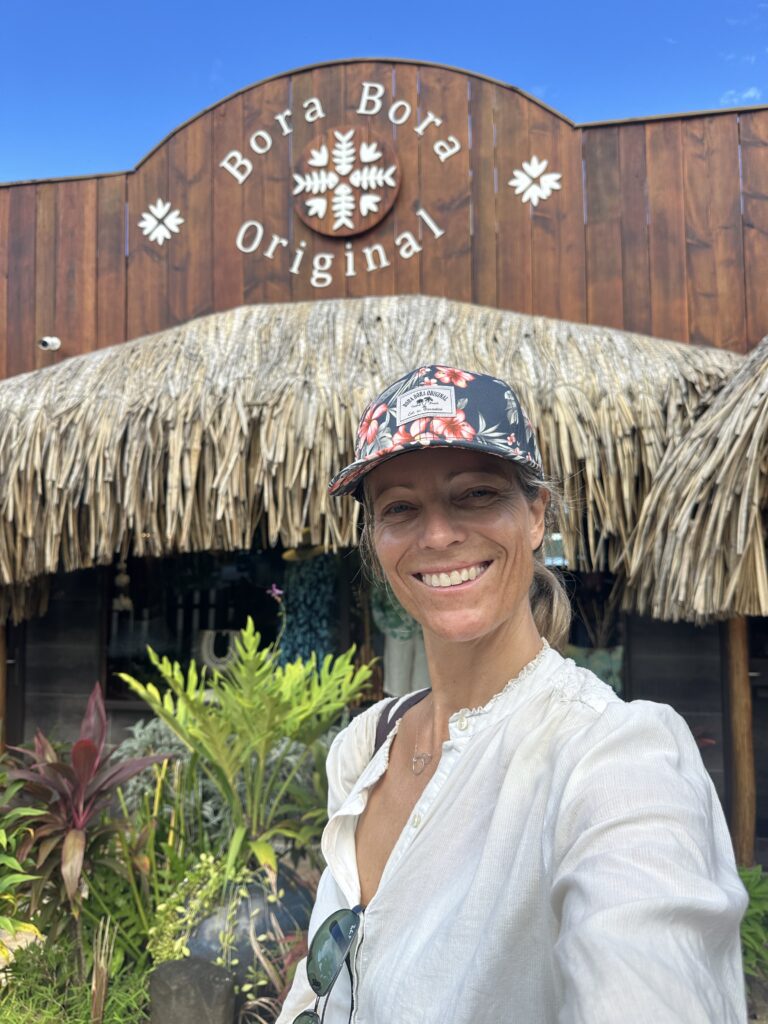
We especially liked the art from one of the artists, Jean-Pierre Frey. He used to be a painter in France, and then stopped painting as he moved onto his sailboat together with his wife. They decided to settle down on Bora Bora, and he then picked up his painting again. He unfortunately passed away two years ago, however his art still lives on. We visited his gallery, which is at the house where his wife still lives.
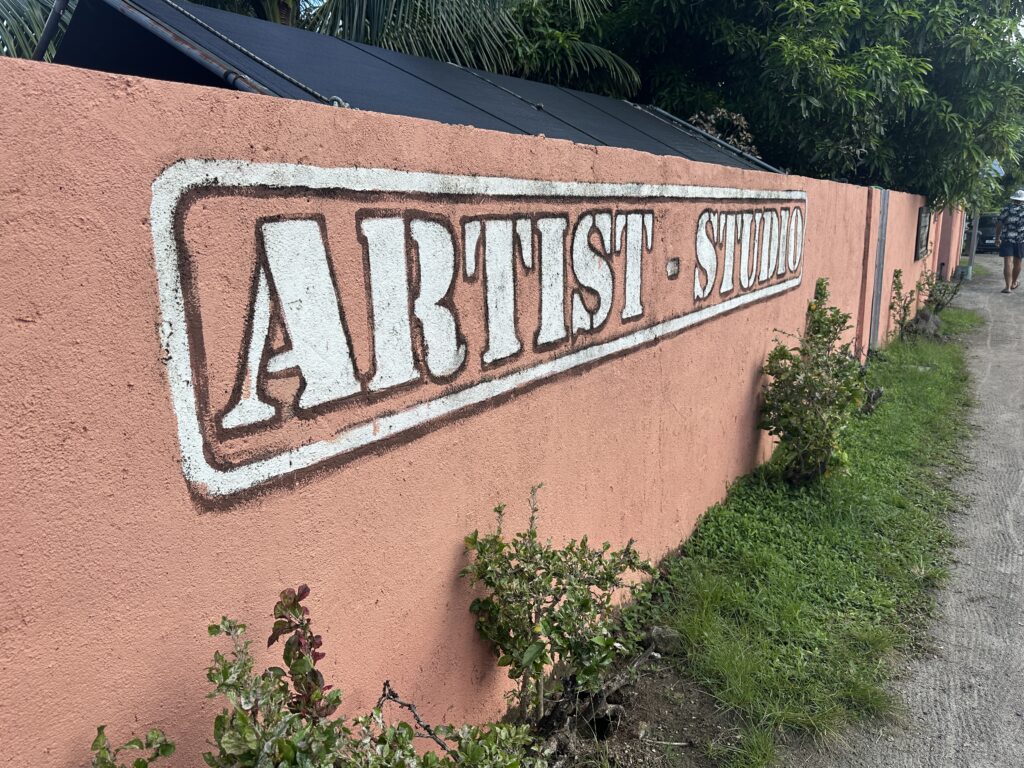

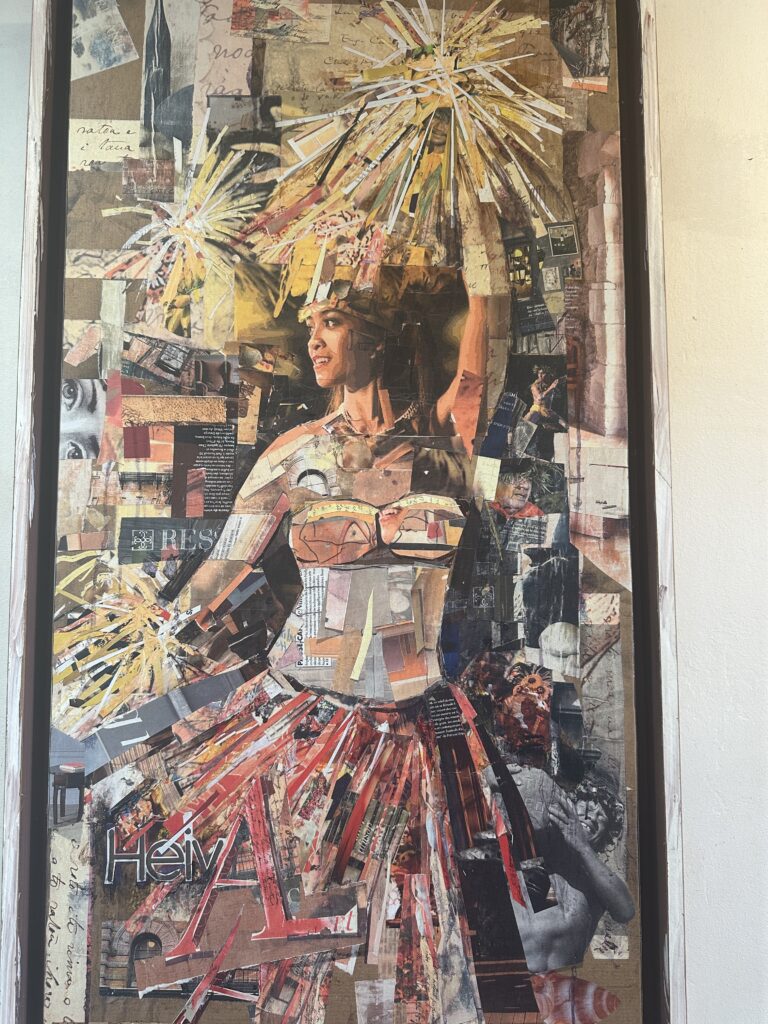
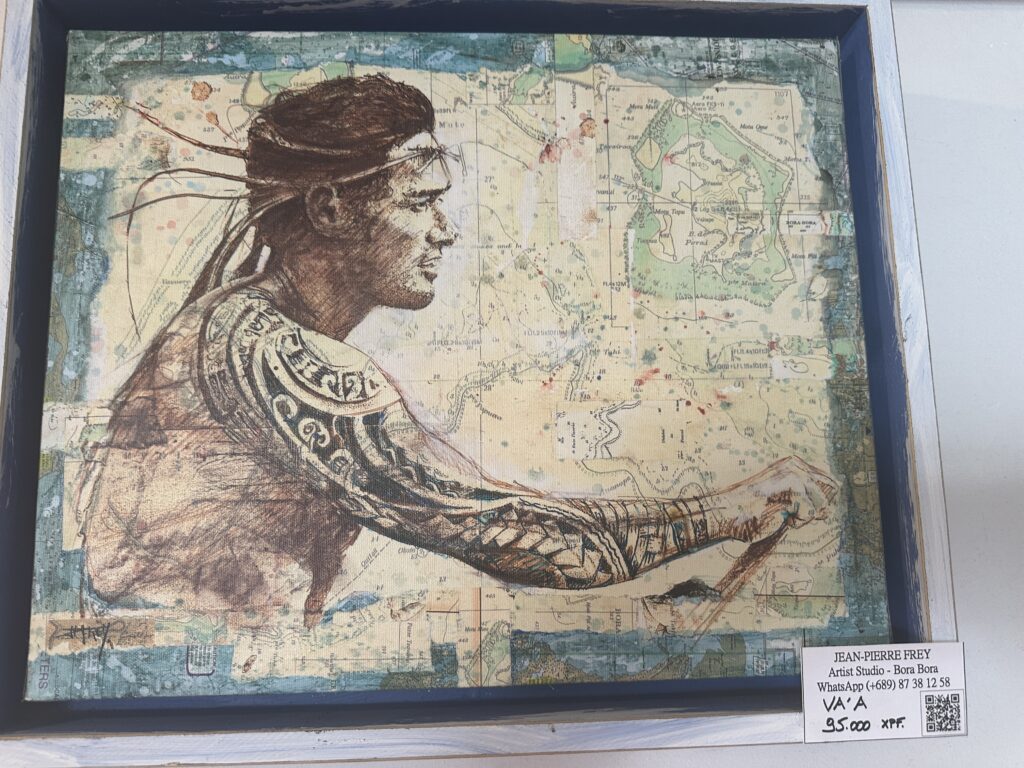
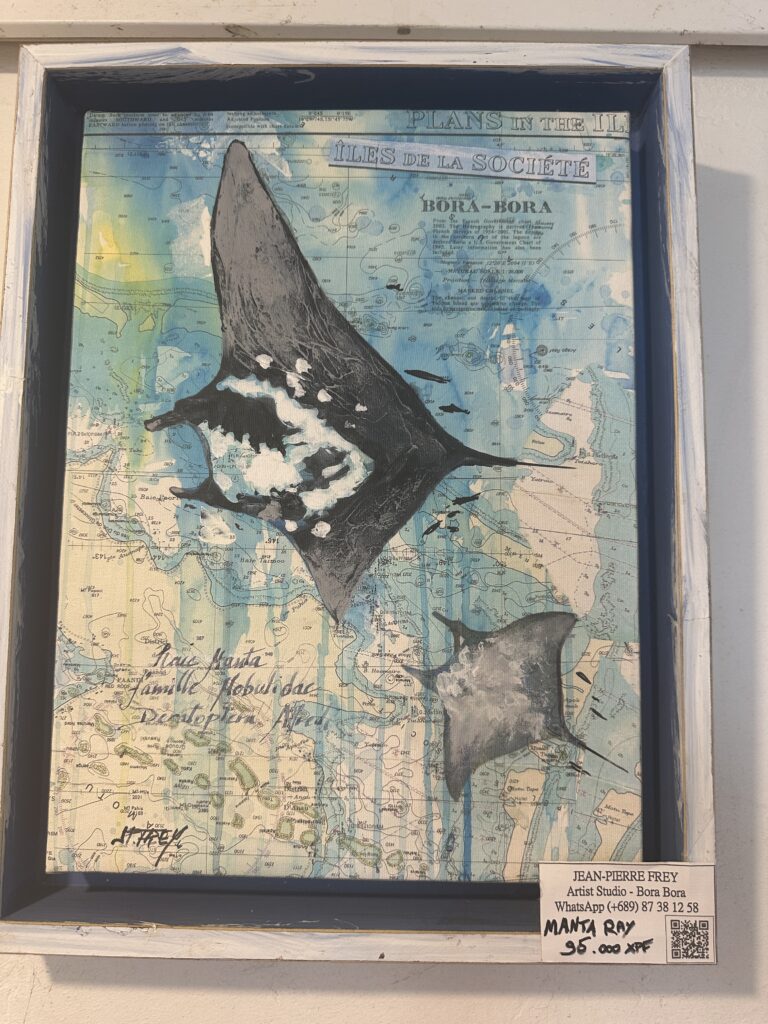
We splurged again on ice cream, and did our last bit of provisioning, as we now move into areas where there is not a lot of amenities available.
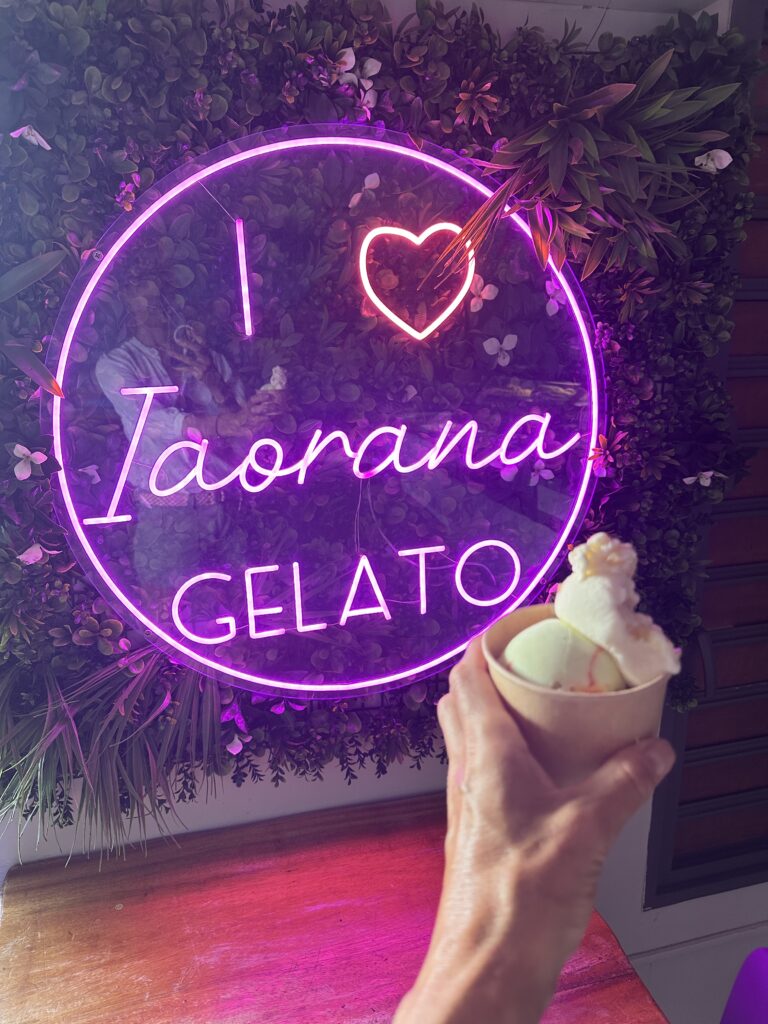
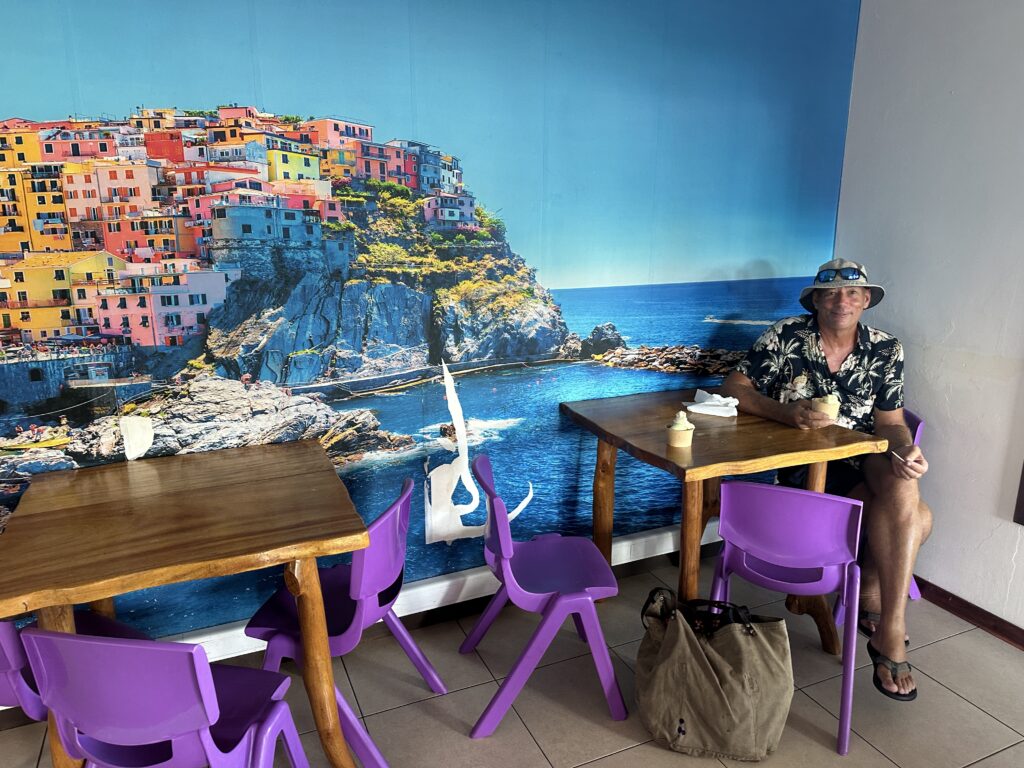
We officially checked out of French Polynesia on Bora Bora, after spending a year here. It went very smooth, we just had to send in an online request through the system the immigration authorities use here, and visit the local Gendarmerie station the same day. Two days later, we returned, got our passports stamped and received our zarpe (clearance papers).
We have now officially left French Polynesia, a year after we arrived! We have truly enjoyed our time here, but unofficially, we are not leaving just yet. As we move further west from here, we plan to stop by two other French Polynesian islands, Maupiti and Maupiha’a.
